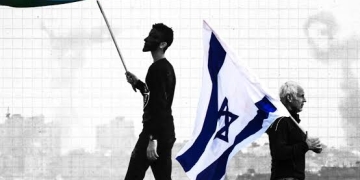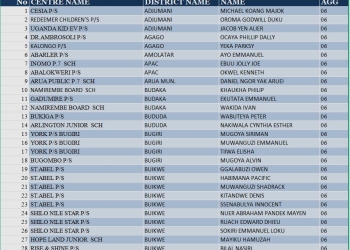
KAMPALA, Uganda — Cardinal Robert Francis Prevost, elected Pope Leo XIV on Thursday, visited Uganda in 2015 as part of Pope Francis’s delegation, it has been revealed.
Prevost, a member of the Augustinian religious order, accompanied Pope Francis during his visit from Nov. 27-29, 2015. Photographs from the visit show Prevost walking alongside Pope Francis. He also served as a translator for the Pontiff during the trip.
Pope Francis’s visit to Uganda was a significant occasion, commemorating the 50th anniversary of the canonization of the Uganda Martyrs, who were declared saints in 1964. The visit was marked by widespread joy and was seen as a unifying event that promoted peace in the country.
Emeritus Archbishop of Gulu John Baptist Odama, who was the chairperson of the Episcopal Conference at the time, recalled Prevost’s presence within the papal team.
“We saw him the day he came with the Pope; he was on the team; he resided at Sheraton Hotel with others,” Archbishop Odama said. “As the chairman, I had a small conversation with him. He was not in a very prominent position then, but was part of the group that provided support to the papal team.”
Archbishop Odama offered his well wishes to the newly elected Pope, stating, “We have received the gift from God, we thank Him for giving us the shepherd.”
Pope Francis and his delegation arrived in Uganda from Nairobi, Kenya, landing at Old Entebbe International Airport. They were received by President Yoweri Museveni, First Lady Janet Museveni, and other prominent figures.
Pope Francis’s 2015 visit made him the third Pope to visit Uganda, following Pope Paul VI in 1969 and Pope John Paul II in 1993.

The election of Pope Leo XIV also draws a historical connection to Uganda through his chosen name. Pope Leo XIII, who led the Catholic Church from 1878 to 1903, played a crucial role in Uganda’s religious history by sending the first White Missionaries (Missionaries of Africa) to the country in 1878. These missionaries, including Pere Siméon Lourdel Marpel and Brother Delmas Amans, arrived in Uganda in 1879 and were instrumental in the spread of Christianity that eventually led to the martyrdom of the Uganda Martyrs.
Matteo Bruni, the director of the Holy See Press Office, noted that Pope Leo XIV’s choice of name is a clear reference to the Church’s social teaching, particularly referencing Pope Leo XIII’s 1891 encyclical Rerum Novarum, which is considered the foundation of modern Catholic social doctrine.
Pope Leo XIV, the first U.S.-born Pope, was born in Chicago, Illinois, in 1955 and was ordained a priest in 1982. He served as a missionary in Peru for nearly 20 years, becoming a naturalized Peruvian citizen. He also held the position of global head of the Augustinians and recently led the Vatican’s office for appointing bishops worldwide. Fluent in English, Spanish, and Italian, Pope Leo XIV is known for his engagement on social media and his willingness to address political issues.

















